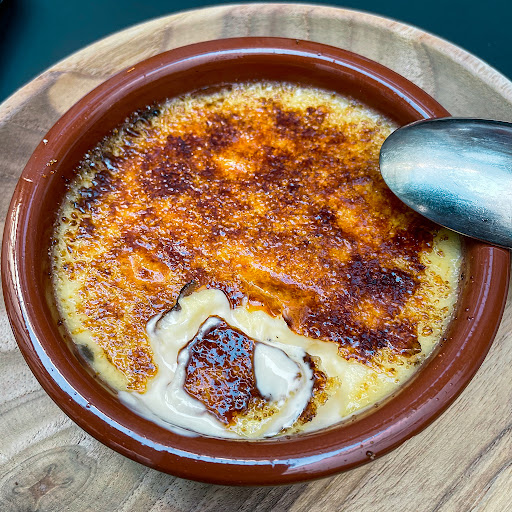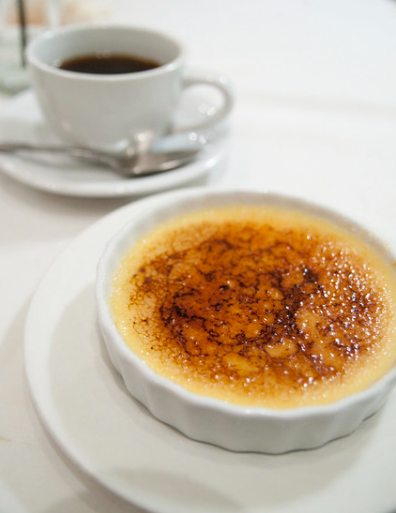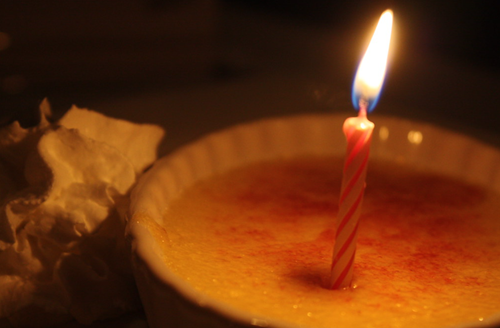
Introduction
If you’re a fan of savory seafood dishes and love the creamy richness of custards, then crab brûlée might just become your new favorite recipe. This dish combines the delicate sweetness of crab meat with the velvety texture of a classic crème brûlée, topped off with a crispy caramelized sugar crust. It’s the perfect blend of sweet and savory, offering a luxurious dining experience that will impress even the pickiest eaters.
Wondering how to make this masterpiece at home? Follow this step-by-step guide to create a restaurant-quality crab brûlée in the comfort of your kitchen!
Ingredients for Crab Brûlée
Before diving into the cooking process, it’s essential to gather all the ingredients you’ll need. Here’s what you’ll require:
- 1 pound of fresh crab meat (or canned if unavailable)
- 1 cup of heavy cream
- 4 large egg yolks
- 2 tablespoons of unsalted butter
- 1 clove garlic, minced
- 1 tablespoon fresh chives, chopped
- 1 tablespoon lemon zest
- 1 teaspoon Dijon mustard
- Salt and pepper to taste
- ¼ cup of granulated sugar (for the brûlée topping)
Types of Crab Meat You Can Use
You can use various types of crab meat depending on what’s available in your region. Here are your options:
Fresh Crab Meat
Fresh crab meat is the best option for a richer flavor. Ensure that it’s cleaned properly and free from shells.
Canned Crab Meat
Canned crab can be a convenient option if you don’t have access to fresh crab. Just drain it well before using.
Frozen Crab Meat
Frozen crab meat is another alternative, but make sure it is fully thawed and patted dry before adding to the recipe.
Equipment Needed for Crab Brûlée

Here’s a quick rundown of the tools you’ll need to make this dish:
- Mixing bowls
- Whisk
- Oven-safe ramekins
- Baking tray
- Kitchen torch (to caramelize the sugar topping)
- Fine mesh sieve (optional)
Step-by-Step Instructions
Now, let’s get cooking! Follow these steps for a successful crab brûlée.
Preparing the Crab Meat
If you’re using fresh crab, ensure that it is thoroughly cleaned and free of any shells. If using canned or frozen, make sure to drain it well to remove excess moisture.
Making the Custard
- In a mixing bowl, whisk together the egg yolks, heavy cream, Dijon mustard, minced garlic, and lemon zest.
- Season with salt and pepper to taste.
- Heat the mixture over a double boiler until slightly thickened, then remove from heat.
Combining the Crab with the Custard
Gently fold the crab meat into the custard mixture, being careful not to break the crab pieces apart too much. You want the crab flavor to shine through in every bite.
Cooking the Crab Brûlée
- Preheat your oven to 325°F (163°C).
- Divide the crab custard mixture into the ramekins.
- Place the ramekins on a baking tray and add hot water to the tray to create a water bath.
- Bake for 30-40 minutes until the custard is set but still slightly jiggly in the center.
Caramelizing the Sugar Topping
- Once the custards have cooled, sprinkle an even layer of granulated sugar on top.
- Using a kitchen torch, carefully brûlée the sugar until it forms a crispy, golden crust.
Tips for the Perfect Crab Brûlée
Ensuring the Right Texture
The key to a successful crab brûlée is achieving the perfect balance between a smooth, creamy custard and a crispy caramelized top. Be careful not to overcook the custard, as it can become rubbery.
Balancing Sweetness and Savory Flavors
Since crab has a natural sweetness, it’s essential to balance it with the right amount of seasoning and mustard to create a delightful contrast.
Pairing Suggestions
Wine Pairing
A crisp white wine, like a Sauvignon Blanc or Chardonnay, pairs beautifully with the richness of the crab brûlée.
Sides to Serve with Crab Brûlée

Serve it with a simple green salad or toasted baguette slices to complement the flavors without overwhelming the dish.
Common Mistakes to Avoid
- Runny Custard: This often happens if the custard hasn’t been cooked long enough. Make sure the center is just set.
- Overcooked Crab: Overcooking the crab can make it chewy, so keep a close eye on the baking time.
Health Benefits of Crab
Crab meat is packed with essential nutrients, including high-quality protein, omega-3 fatty acids, and various vitamins and minerals. It’s also low in fat, making it a great option for those who want to eat light but still indulge in rich flavors.
Variations of Crab Brûlée
Looking to put your own spin on the recipe? Consider these variations:
- Herbs and Spices: Try adding fresh tarragon or dill for an extra layer of flavor.
- Serving Styles: You can serve the crab brûlée in smaller portions as a fancy appetizer for dinner parties.
How to Store Leftovers
Reheating Tips
You can store crab brûlée in the refrigerator for a maximum of two days. Reheat it gently in the oven to avoid curdling the custard.
Freezing Crab Brûlée
Freezing is not recommended as the texture of the custard may change after thawing.
Conclusion
Crab brûlée is the idealize dish to awe your supper visitors or basically treat yourself to a gourmet feast at domestic. Combining the fragile flavors of crab with the lavishness of a classic brûlée makes it a one-of-a-kind and tasty choice for fish significant others. Don’t falter to grant it a try—you’ll be astounded at how simple it is to make this restaurant-quality dish in your kitchen!
FAQs
Can I utilize impersonation crab for this recipe?
Yes, but the flavor won’t be as wealthy as utilizing genuine crab meat.
Do I require a kitchen burn to make the brûlée topping?
While a burn works best, you can utilize your oven’s broiler to caramelize the sugar.
Can I make crab brûlée in advance?
Yes, you can plan the custard a day in development and brûlée the sugar fair sometime recently serving.
What can I substitute for overwhelming cream?
You can utilize half-and-half or coconut cream for a lighter version.
Is crab brûlée gluten-free?
Yes, the formula is actually gluten-free, making it appropriate for those with gluten sensitivities.
